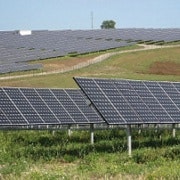The truth on weather and electricity demand
As discussed in several forums, electricity demand in the NEM has been decreasing for the last three or four years. There have been significant implications for wholesale prices and flow-on effects for investment in the energy sector. But what is actually driving down demand? This is an important question as it shapes what demand may do in the future.
Among the possible drivers reducing demand are:
-- Impacts of the Global Financial Crisis (GFC);
-- Price elasticity (higher energy prices driving efficiency) in industrial and commercial sectors;
-- The dramatic increase in deployment of PV in the domestic sector;
-- The Home Insulation Program reducing heating and cooling demands; and
-- The weather.
No doubt all of these have some impact, but some are more important than others. Here we tackle the question of the role of the weather.
If we examine the variability in extreme weather over the last three of four years we see that there is no real trend in NSW, but there has been a decrease in the extreme high temperatures in Victoria – in 2009 we had the extreme heat (46.6°C) that led to the Black Friday bushfires, and since then ‘maximum maximums' have been relatively modest (43.6 in 2010, 40.2 in 2011 and nothing to speak of in 2012, to date). This seems to have led to the perception that weather has been a factor. But has it actually?
The heatwaves do drive extreme demand, but it tends to be short-lived. We really need to look at the seasonal average weather patterns. And, in New South Wales and Victoria, there has been no trend, and in fact no standout years for seasonally averaged maximums or minimums over the last decade. The last notable deviations for Victoria were a hot summer in 2001 and cool summer in 2002.
We can do a more sophisticated analysis of the connections between temperature and demand, deriving empirical relationships for each year for each state. We can the use these relationships and the average weather to remove the effect of weather on actual demand.
Demand and weather anomalies for NSW (left) and Victoria (right)


The results show that demand is more sensitive to weather in NSW than in Victoria. As would be expected, the weather affects demand with a negative correlation in winter and positive correlation in summer. Notable events in NSW are higher demands due to weather related to a cool winter in 2008, and warm summers in 2010 and 2011. However the anomalies are the order of 0.2 GW, and there is no trend.
In short, the weather has a dramatic impact on demand in the short-term, but it tends to average out, and we see no contribution in weather variability to the decreasing demand in electricity seen over the last four years.
As a side note, the lack of extreme heat in the last couple of years is related to the prevailing La Nina conditions (which also brought the floods). The La Nina is over, and we are forecast to return to moderate El Nino conditions. Expect some hot weather again this summer – and some extreme electricity demand days.
Roger Dargaville is a Senior Energy Analyst at University of Melbourne's Energy Institute and Department of Earth Sciences.
















